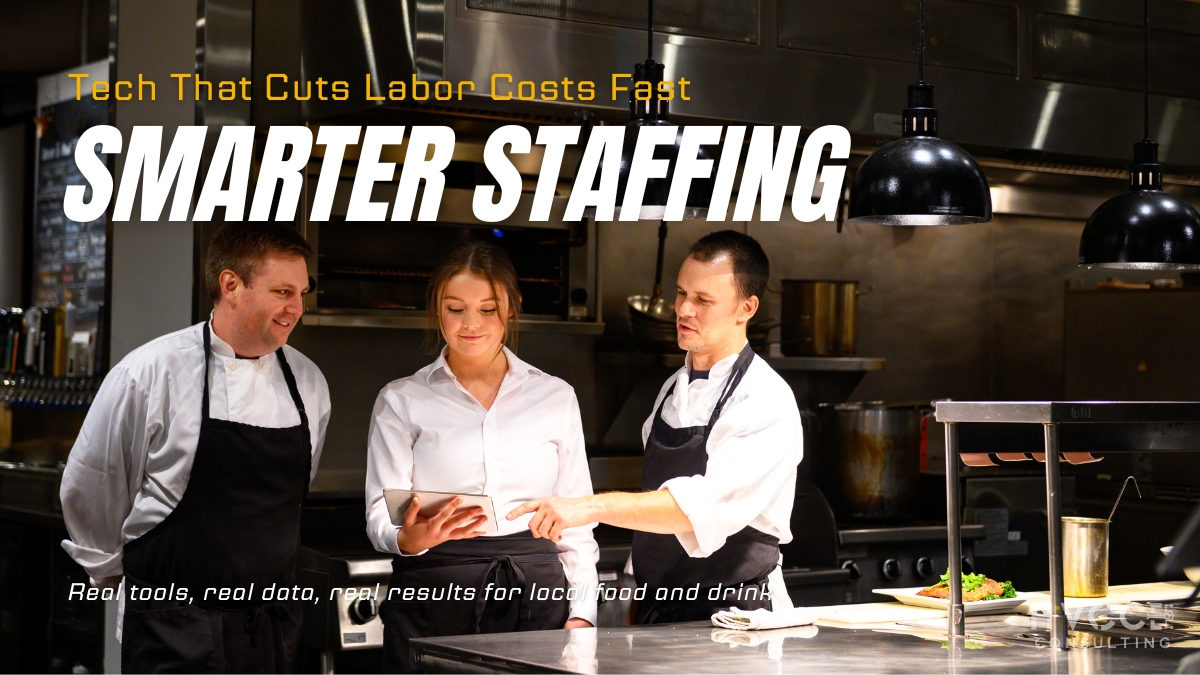

How Can Tech Help Cut Restaurant Labor Costs Fast?
Everyone's Asking Me This Week: "Can Tech Actually Fix My Labor Problem?" Short answer? Yes - if you use it right. Between rising wages, burnout, and the constant scramble to cover shifts, managing labor has become the hospitality version of whack-a-mole. But here's the thing: the right data and tech strategy doesn't just trim hours - it transforms how your team works, stays, and grows.
Let's settle this once and for all.
Why Labor Costs and Turnover Are Eating Restaurants Alive
Every owner I talk to - from Norfolk to Nags Head - says the same thing: "I'm not short on guests, I'm short on staff." Labor costs are creeping up, overtime is killing margins, and great people are burning out faster than you can say double shift.
And it's not just a people problem - it's a systems problem. When your scheduling, payroll, and staffing decisions are based on gut feel instead of data, inefficiency multiplies. The result? Overstaffed Mondays, understaffed Fridays, and frustrated employees who feel like they're living on a rollercoaster.
That's where smarter tech and data strategy come in.
Stop Overstaffing Mondays and Understaffing Sunday Brunch
Data-driven scheduling is your secret weapon.
Most scheduling tools (like 7shifts, Sling, or Homebase) now integrate real-time sales, weather data, and historical traffic. This means you can forecast labor demand - not guess it.
Here's how it looks in action:
-
Pull your past six weeks of POS data. Look at guest counts by day and hour.
-
Overlay sales trends with labor reports. If sales dropped 30% on Mondays, why are hours flat?
-
Set smart rules. Example: "No more than 18 total front-of-house hours on a Monday shift."
These small, data-backed tweaks can save five labor hours a week - without hurting service.
Pro Tip: Most systems let you tag "overtime alerts." Turn them on. Five hours of avoided OT per week equals over $1,000 saved per month for many independent operators.
Free (or Low-Cost) Tech Tools That Actually Save You Time
You don't need enterprise software to win here. These tools punch way above their price:
-
7shifts (Free Tier): Great for restaurants and breweries. Forecasts sales and automates shift swaps.
-
Deputy: Ideal for multi-location cafés or quick-service spots. Integrates with Square, Toast, and QuickBooks.
-
Homebase: Perfect for smaller teams. Built-in time clock and labor cost alerts.
-
Planday (Free Trial): Better for wineries or hybrid food-retail setups that need flexible scheduling.
And here's the real ROI: when tech automates scheduling, managers get hours back for coaching, training, and guest experience - the things that actually keep people around.
Hiring for Tech: The Digital Skills Your Next Manager Must Have
Let's talk leadership. Your next great manager isn't just a "people person." They're tech fluent.
When you interview, look for candidates who can:
-
Run a basic labor report in your POS or scheduling tool.
-
Adjust staffing levels based on forecasted covers.
-
Understand how digital communication (like Slack or Teams) keeps your crew aligned.
This isn't about replacing people with tech - it's about hiring people who can lead with tech.
Think of Your Labor Model as a Dynamic System
Here's where the quantum mindset kicks in. Labor isn't fixed - it's fluid. Instead of viewing your team as static roles ("server," "bartender," "expo"), think multi-path.
Cross-training your crew turns a fragile system into a resilient one:
-
A barback who can run food.
-
A host who can handle to-go orders.
-
A line cook who can jump on prep.
Each person becomes a flexible node in your system. So when someone calls out, you adapt without chaos - and maintain excellence without burnout.
Hvcce's Take: Here's the Move We'd Make
If we were running your shop, we'd:
-
Start with your POS data. Pull 60 days of labor-to-sales ratios.
-
Integrate a smart scheduling platform. Automate alerts and eliminate manual guesswork.
-
Cross-train top performers. Incentivize them with small raises or shift flexibility.
-
Track labor efficiency weekly. Not monthly - weekly. You can't manage what you don't measure.
The goal isn't just to reduce labor costs - it's to build a smoother, smarter operation that attracts and keeps the right people.
The Takeaway: Run Leaner, Lead Smarter
If you only do one thing after reading this, make it this: get your labor data working for you. The right tech doesn't replace leadership - it amplifies it.
Your schedule isn't just a spreadsheet - it's a strategy.
Ready to Rebuild Your Labor Strategy the Smart Way?
At Hvcce, we help local restaurants, cafés, bars, breweries, and wineries combine CMO-level marketing with CIO-level tech to drive real results. If labor costs or turnover are eating your margins, let's fix it - together.
👉 Visit hvcce.com to start your smarter growth plan today.